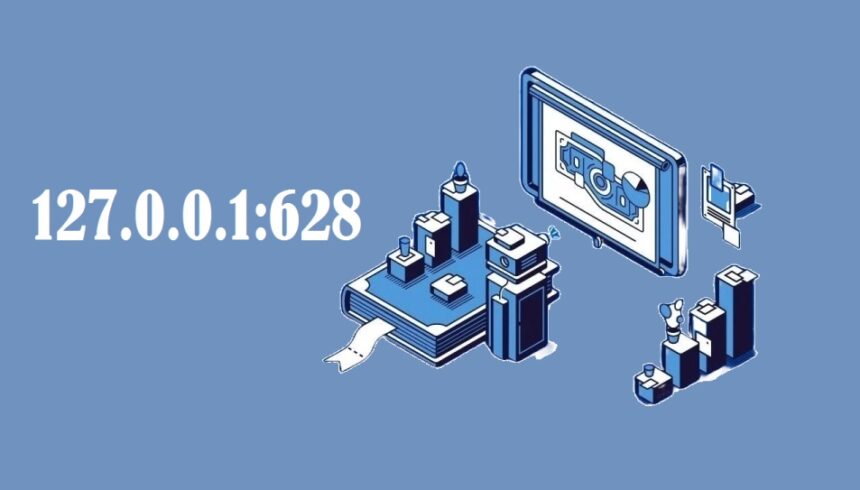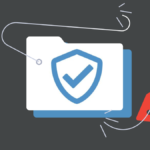Introduction to IP Addresses and Ports
In the realm of computer networks, understanding the structure and functionality of IP addresses and ports is essential for effective communication. An Internet Protocol (IP) address serves as a unique identifier for devices connected to a network, allowing them to send and receive data. The format of an IP address consists of four numerical segments, each ranging from 0 to 255, separated by periods, characterizing the network location of a device.
One critical concept in networking is the notion of “localhost,” which is represented by the IP address ‘127.0.0.1’. This address is a special loopback address that enables a computer to communicate with itself. In essence, it acts as a reference point for the device, facilitating local services and applications to function correctly without requiring external network access. As a result, developers often utilize ‘127.0.0.1’ to test and troubleshoot applications in a controlled environment.
In addition to IP addresses, ports play a crucial role in directing traffic to specific services running on a device. A port number, such as ‘62893’, can be likened to a channel through which data packets are sent and received. Each service or application listens on a designated port, allowing multiple services to coexist and function simultaneously on a single IP address. Port ‘62893’, like other port numbers, can be associated with various applications, providing flexibility and functionality in network communications.
Understanding the association between ‘127.0.0.1’ and port ‘62893’ is vital for grasping the foundational principles of networking. It enables users to recognize how their devices utilize these identifiers to communicate with various services, ultimately enhancing their operational knowledge of local network configurations.
The Role of 127.0.0.1:62893 in Localhost Communication
The address 127.0.0.1:62893 plays a pivotal role in facilitating localhost communications, which are essential for various applications running on a user’s machine. This address, also known as the loopback address, allows services to interact with each other without the need for an actual network connection. In this manner, the address is utilized by developers and system administrators to test applications in a controlled environment.
One common scenario where 127.0.0.1:62893 is employed is within web server applications. For instance, when developers want to test their websites, they often set up a local server instance that listens on this address. By accessing the web application through a browser using this address, developers can see their changes in real-time and ensure that everything functions as expected before deploying to a production environment.
Moreover, databases frequently utilize the address 127.0.0.1:62893 for client-server interactions. When a database management system is set up locally, it can be configured to accept connections only from this loopback address. This configuration enhances security, as it restricts access solely to the local machine, preventing external entities from connecting to the database without proper authorization.
Other services that might employ the 127.0.0.1:62893 address include development frameworks and application platforms. For example, Node.js applications often run on localhost, using this address to serve and interact with various APIs or frontend applications. The ability to utilize this address ensures minimal latency during testing phases while allowing seamless communication between different components of the application.
Overall, 127.0.0.1:62893 is a crucial component of localhost communication, streamlining the development and testing process for a wide range of applications. Its role in supporting applications such as web servers and databases underscores its importance in the realm of local development.
Security Implications of Using 127.0.0.1:62893
The address 127.0.0.1:62893, often referred to as “localhost,” is a key component in networking and web development. While it facilitates local communication between software applications, it can also present certain security vulnerabilities if not properly managed. Understanding the potential risks associated with exposing services on this localhost address is paramount for developers and system administrators.
One primary concern is the risk of local services being inadvertently exposed to external networks. If a service is binding to 127.0.0.1:62893 without appropriate firewall restrictions, it might allow unauthorized access, which can lead to unauthorized data access or manipulation. It is essential to implement robust security measures here, including configuring the firewall to restrict connections only from localhost, thereby safeguarding against external threats.
Additonally, it is critical to regularly update and patch local services running on 127.0.0.1:62893. Many vulnerabilities stem from outdated software that can be exploited by malicious users. Regular maintenance is not only advisable but necessary to ensure the security integrity of local applications. Implementing secure coding practices during development also minimizes the risk, as vulnerabilities introduced during this phase can have long-lasting impacts.
Moreover, using strong authentication mechanisms for services operating on localhost can further enhance security. Ensuring that only trusted users have access to administrative interfaces will prevent unauthorized actions that could compromise system integrity. By adopting practices such as these, users can take significant steps toward protecting their systems while working with local servers.
Ultimately, the main takeaway is that while using 127.0.0.1:62893 provides convenience for development and testing, it does not negate the necessity for sound security principles. A diligent approach to security can markedly reduce vulnerabilities, allowing for effective use of local services without compromising safety.
Configuring and Troubleshooting Services on 127.0.0.1:62893
To effectively manage services on the local address 127.0.0.1:62893, it is essential to follow a structured approach for configuration and troubleshooting. This guide will walk you through the steps to set up a sample service while addressing potential issues that may arise during the process.
Start by selecting a service to configure on 127.0.0.1:62893. A common choice is a lightweight web server, such as Apache or Nginx. Begin by installing your preferred server package. For Apache, use the command sudo apt-get install apache2. Once installed, modify the configuration file, usually located at /etc/apache2/ports.conf, to listen on port 62893 by including the line Listen 62893.
Next, ensure that the server’s virtual host configuration includes the address 127.0.0.1:62893. For Apache, this involves editing the /etc/apache2/sites-available/000-default.conf file to create a block similar to:
DocumentRoot /var/www/html ErrorLog ${APACHE_LOG_DIR}/error.log CustomLog ${APACHE_LOG_DIR}/access.log combined
After making changes, restart your service using sudo systemctl restart apache2.
Common issues may include the server not starting or being unreachable. If you encounter connection problems, first check the firewall settings to ensure that the port 62893 is open. Use the command sudo ufw allow 62893 to permit traffic on this port.
Additonally, monitoring logs located at /var/log/apache2/error.log can provide insights into why the server may not be functioning as expected. By systematically configuring and troubleshooting services on 127.0.0.1:62893, users can effectively ensure smooth operation and mitigate connection issues.
You May Also Like





